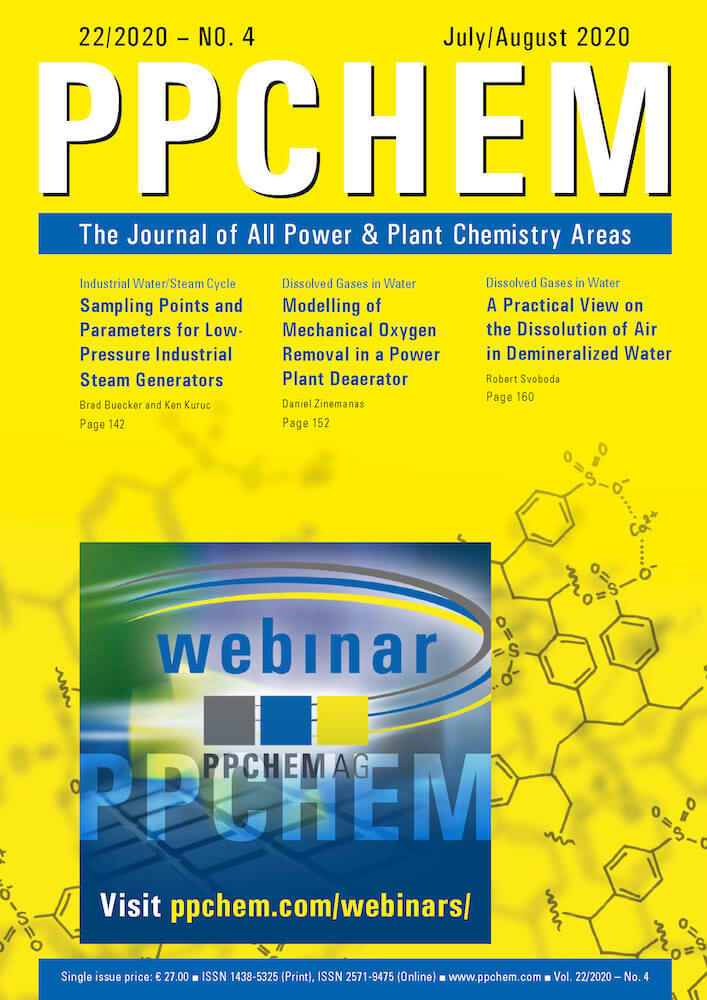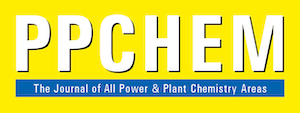
For members only
ABSTRACTS
Sampling Points and Parameters for Low-Pressure Industrial Steam Generators
Brad Buecker and Ken Kuruc
Although thousands of low-pressure steam generators exist at industrial plants around the globe, the chemistry of such units has not received the same attention as that of high-pressure units. The conditions in these steam generators are typically not as harsh as in utility units, yet water/steam chemistry control is still very important for the plants’ steam/condensate systems. This article discusses many of the most important sampling points and parameters for industrial steam generators, and it illustrates the benefits of proper chemistry control to maintaining equipment reliability and availability.
PPCHEM® 2020, 22(4), 142–150
For Members only
Modelling of Mechanical Oxygen Removal in a Power Plant Deaerator
Daniel Zinemanas
Oxygen removal is an integral part of the water/steam cycle chemical treatment in power plants and is generally performed in the deaerator. Understanding of this process, particularly during transient conditions, is important to analyze the plant data, and for this goal modelling of this process can be helpful. It is thus the main motivation of this paper to develop a simple workable theoretical model of the mechanical oxygen removal process in a power plant deaerator. Results of the model are compared to power plant operational data and show a very good match between the calculated and the measured data. Thus, the model can be useful in understanding the deaerator’s behavior and performance as well as for design or training.
PPCHEM® 2020, 22(4), 152–157
For Members only
A Practical View on the Dissolution of Air in Demineralized Water
Robert Svoboda
The equilibrium of the components of air with water can be calculated by means of Henry’s law and the ionization equilibria. This article gives guidance for such calculations and covers conditions up to 100 °C. At 25 °C and 1013mbar atmospheric pressure, the equilibrium for oxygen in water is 8.4 mg · kg–1. With 410 ppm CO2 in air, its mass fraction in water is 694 μg · kg–1 CO2, where 595 μg · kg–1 are present as dissolved gas and 99 μg · kg–1 are ionized to HCO3-. The result is a slightly acidic water with pH = 5.65 and 0.89 μS · cm–1 conductivity. In generator cooling water systems with neutral water treatment, this will cause an increase in copper release. With alkaline water treatment, the contact with untreated air can lead to the deterioration of alkaline conditions.
PPCHEM® 2020, 22(4), 160–169

